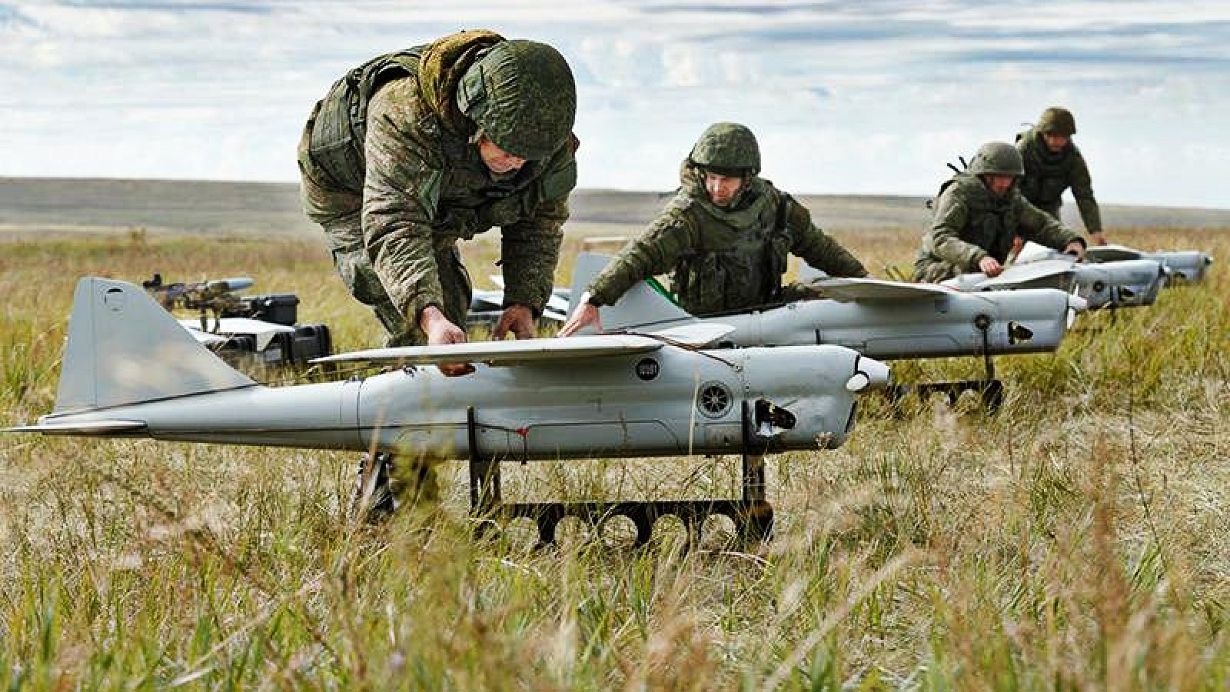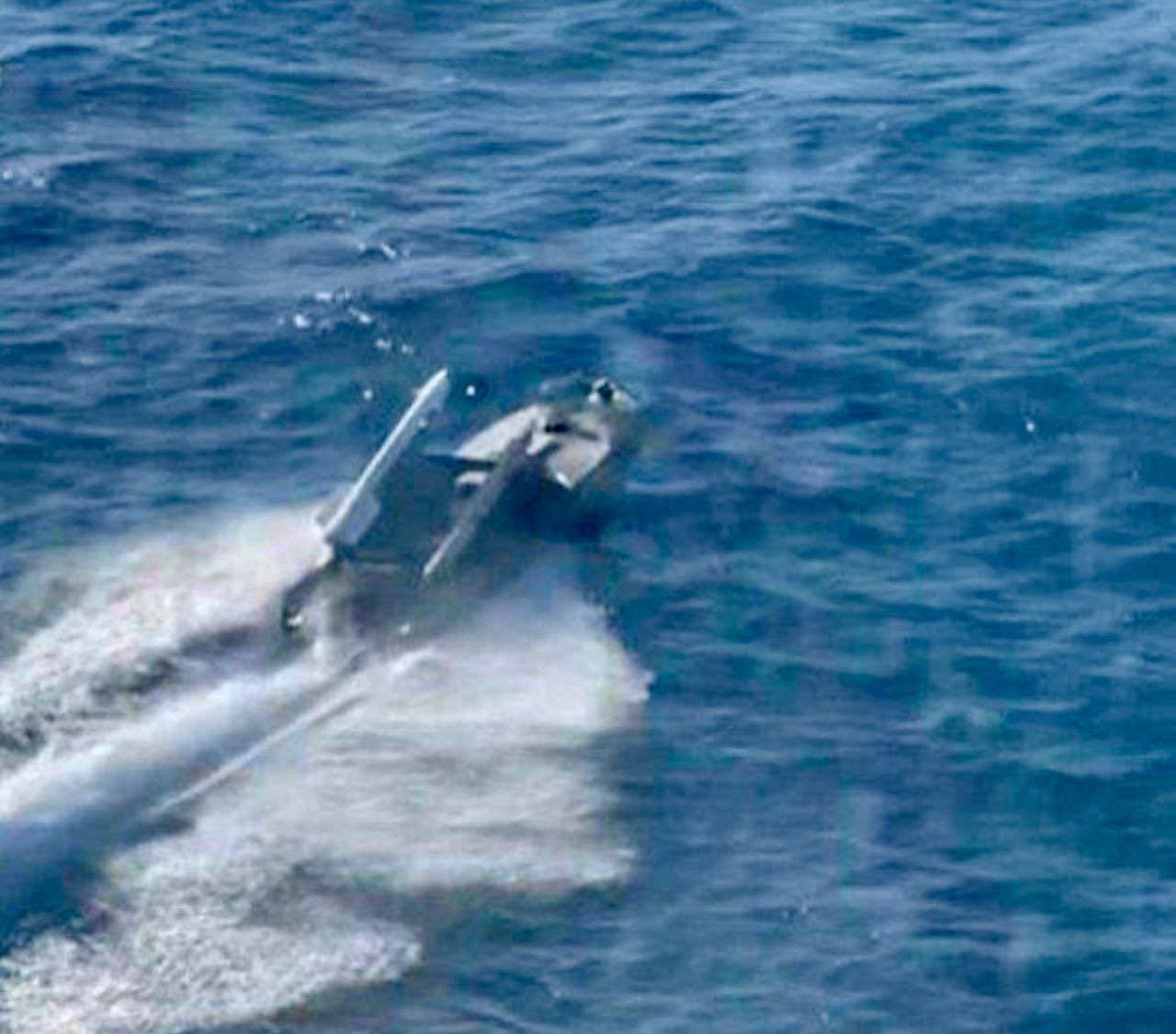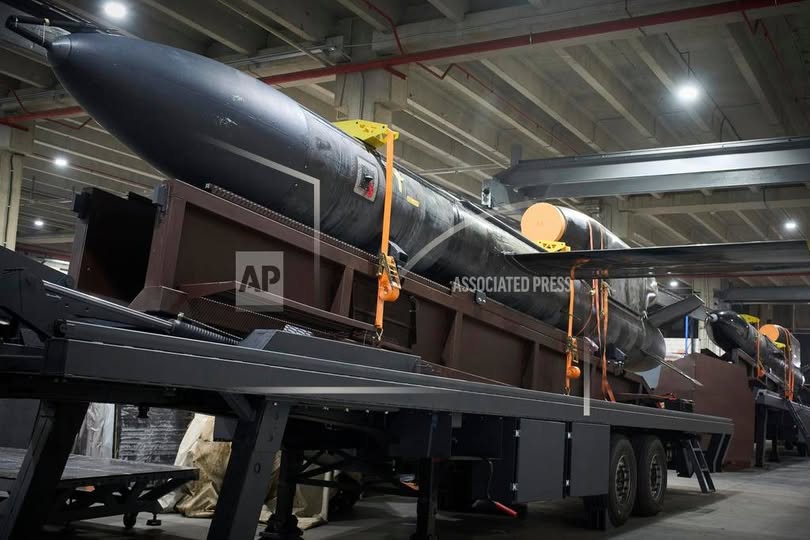Ukraine “Silicon Valley” Of Defense: How A War-Torn Nation Is Fast Emerging A Drone & Missile Hub

“Necessity is the mother of invention,” goes a famous proverb. Fighting an existential battle against Russian aggression and having to deal with frequent U-turns by the US administration, Ukraine knows that it can only rely on its own capabilities in the long run.
Pushed to the wall, Ukraine has shown tremendous ingenuity not only in battlefield tactics but also behind the frontline in designing and developing new weapon systems.
Ukraine has already developed one of the world’s most advanced drone industries. Ukrainian multi-purpose unmanned surface vehicles (USV), such as Magura, have already transformed sea battles and have achieved many historical firsts.
When the war started three years ago, Kyiv only had a ragtag Air Force and hardly any sea fleet worth mentioning. Facing an adversary that boasted one of the world’s largest Air Forces and a formidable Black Sea fleet, Ukraine has blunted these advantages, which Moscow thought would be enough for it to dominate Ukrainian skies and the Black Sea.
The area denial/sea denial strategies Ukraine has employed through a combination of drones, USVs, and underwater sea drones is a case study in asymmetric warfare for all militaries.
Ukraine is already producing nearly 40% of the weapons it is using on the frontline, including 95% of the drones, and is producing some of the world’s longest-range drones and the world’s best USVs. Last month, Kyiv tested a short-range ballistic missile, and has now started mass-producing a 3,000 km range cruise missile.

The speed with which Ukraine is churning out new-age weapons systems, designed and developed by just a few-year-old start-ups, has led many security analysts to call Kyiv the ‘Silicon Valley of Defense’.
Ukraine’s Drone Revolution
Ukraine is hopeful that it will be able to leverage its spectacular advancements in drone technology as soon as the war is over.
Ukraine has prepared and offered the United States a US$50 billion drone deal for five years with the production of 10 million drones per year, President Volodymyr Zelenskyy said.
“Regarding drones: the drone deal (agreement – IF-U), which we prepared and proposed to the American side for production and co-production for US$50 billion: five years, 10 million drones per year. Such a big program. Probably, after the war, it will work,” Zelensky said during a conversation with journalists on August 20.
The President of Ukraine announced on August 19 an agreement with US President Donald Trump that, after the export is opened, America will buy Ukrainian drones. “And we have an agreement with the US President that when we open exports, they will buy Ukrainian drones. This is important for us,” he said during a briefing in Washington.
The US is especially interested in Ukrainian naval drones to counter China’s growing naval strength in the Indo-Pacific.
Notably, if Ukraine can indeed export drones worth USD 10 billion annually, it will put Ukraine into the world’s top-three arms exporters.

According to the Center for Analysis of the World Arms Trade (CAMTO), in 2024, the US was the world’s biggest arms exporter, selling arms worth USD 42.33 billion, followed by Russia (USD 13.75 billion) and France (USD 7.7 billion).
Incidentally, according to SIPRI data, Ukraine was the world’s largest arms importer during the period 2020-2024.
If Ukraine can transform from the world’s largest arms importer to one of the world’s largest arms exporters, it would be a testament to the tremendous progress the Ukrainian defense industry has made in a short span of time.
According to the Ukrainian government, Kyiv is already producing 40% of the weapons it is using on the frontlines.
Ukraine’s Long-Range Drones
In May this year, the Ukrainian An-196 drone flew over 1,200 km to strike the Yelabuga drone factory in Russia’s Tatarstan region. The main reason Russia established this factory in Tatarstan was that it was over 1,000 km away from the frontlines.
Since Ukraine lacked long-range missiles, Russia believed this drone factory would be out of Ukraine’s reach. However, drones like An-196 have changed Russia’s strategic calculus.
Costing just over USD 200,000, this drone can fly 1,200 km and carry a 50–75 kg warhead.
However, this is not the only long-range drone in Ukraine’s arsenal.
Ukraine’s UAC FP-1, a long-range loitering munition, is capable of striking targets up to 1,600 kilometers away while carrying a devastating 113 kg warhead.
This cutting-edge platform significantly surpasses the performance of earlier Ukrainian models, such as the PD-1, which was limited to around 1,000 km of range and a lighter payload.
Once the war is over, Ukraine could export these long-range drones not just to the US, but to European countries as well.
Unmanned Surface Vessels With Missiles: A Unique Ukrainian Innovation
While Ukrainian drone innovations are impressive, its strides in Unmanned Surface Vehicles (USVs) are stunning and have attracted the attention of even the US and European nations.
Ukraine’s low-cost USVs have transformed naval warfare and destroyed nearly one-third of the Russian Black Sea fleet.

In February last year, the Ukrainian Magura V5 USVs sank the Ropucha-class landing ship Caesar Kunikov off Crimea’s southern coast. Up to 10 drones, each carrying around 400 pounds of explosives, struck the vessel in a 20-minute nighttime attack, causing it to sink.
Next month, Ukraine’s Group 13 special unit used Magura V5 USVs to sink the Sergey Kotov, a modern Project 22160 patrol ship, near the Kerch Strait. The US$65 million vessel, equipped with a helicopter and capable of carrying cruise missiles, sustained critical damage to its stern, starboard, and port sides.
However, the real shocker came in May this year, when a Ukrainian Magura-7 USVs firing the US-made AIM-9 Sidewinder air-to-air missile had brought down two Russian Sukhoi Su-30 fighter aircraft over the Black Sea, a historic first.
The same sea drone has also brought down Russian helicopters. Impressed with the mighty skills of these sea drones, even the US Navy is eyeing these USVs.
Speaking at the SOF Week conference in Tampa, Florida, on May 6, an official from USSOCOM’s Program Executive Office-Maritime (PEO-M) confirmed there is interest in pursuing USVs capable of carrying a variety of kinetic and non-kinetic effects.
Again, once the war is over, many countries could line up to procure Magura USVs from Ukraine.
Ukraine’s Long-Range Missile ‘Flamingo’
When the war started, Ukraine had no long-range missiles. However, within three years, Ukraine has successfully developed Flamingo, a 3000-km range cruise missile.
On August 17, Associated Press (AP) photojournalist Efrem Lukatsky reported that Ukraine’s domestically developed long-range Flamingo cruise missile has entered serial production.

Developed by Fire Point, a Ukrainian defense start-up, the missile will allow Ukraine to take the fight back to Russian cities, which have so far been shielded by the worst impacts of the war.
“Fighting in the air is our only real asymmetric advantage on the battlefield at the moment. We don’t have as much manpower or money as they have,” Iryna Terekh, head of production at Fire Point, told PBS in a recent interview.
Fire Point also produces FP-1 exploding drones that can travel up to 1,600 kilometers (994 miles) before hitting their targets.
With a payload of explosives weighing 60 kilograms (132 pounds), FP-1 is responsible for 60% of strikes deep inside Russian territory, including hits on oil refineries and weapons depots, according to Terekh.
Notably, Flamingo could easily become Europe’s longest-range cruise missile. Germany’s Taurus missile has a range of nearly 550 km. Similarly, the British-French Storm Shadow/SCALP has an effective range of 560 km.
Currently, the longest-range cruise missile in Europe is France’s MdCN (Missile de Croisière Naval), also known as SCALP Naval. The MdCN is a naval cruise missile derived from the SCALP platform. It has an officially declared range of over 1,000–1,400 km, and carries a warhead weighing approximately 300 kg.
Thus, if the Ukrainian claims are accurate, then Flamingo’s range is more than double the range of Europe’s current longest-range cruise missile. A spectacular achievement given that Ukraine developed it within three years.
Notably, Europe is currently trying to produce a long-range cruise missile to fill a crucial capability gap, exposed by Russia’s War in Ukraine.
In July this year, France, Germany, Italy, and Poland signed a letter of intent to develop ground-launched cruise missiles with a range beyond 500 km (310 miles).
Speaking after the signing ceremony, French Defense Minister Sebastien Lecornu said the new missile was meant to serve as a deterrent.
Ukraine’s experience in developing Flamingo could be beneficial to European countries.
Fire Point is currently producing roughly one Flamingo per day, and by October, they hope to build capacity to make seven per day, Terekh said.
Fire Point is just one of the hundreds of Defense startups that have sprung up in Ukraine since the war started.
According to the Centre for European Policy Analysis (CEPA), Ukraine’s once-neglected defense industry has surged from US$1bn in output in 2022 to an expected US$15bn this year, with hundreds of tech startups joining state firms to produce vital equipment, including artillery, drones, and missiles.
Also, according to some defense industry insiders, Ukraine is innovating much faster than even the Silicon Valley startups.
While Ukrainian drone makers have mastered mass production despite limited resources, The Wall Street Journal reported that US startups have spent billions to meet Pentagon demand and have too often produced costly aircraft that struggle to fly.
Drones in Ukraine are also upgraded every few weeks, far faster than the Pentagon’s years-long budgeting cycle. Californian startup CX2 says no US company is matching Ukraine’s pace.
In 2023, Ukraine’s Ministry of Digital Transformation launched Brave1, a platform designed to evaluate defense tech ideas and fast-track the most promising for development and frontline deployment. The program supports more than 1,500 Ukrainian tech companies with grants and logistical and technical aid, helping boost investment to US$40m in 2024, an eightfold increase on the previous year, CEPA reported.
Ukraine’s wartime innovations could be of crucial help to Europe in its over €800 billion ‘Rearm Europe’ project and could be an important part of the continent’s defense architecture.
- Questions and Answers
- Opinion
- Motivational and Inspiring Story
- Technology
- Live and Let live
- Focus
- Geopolitics
- Military-Arms/Equipment
- Sicherheit
- Economy
- Beasts of Nations
- Machine Tools-The “Mother Industry”
- Art
- Causes
- Crafts
- Dance
- Drinks
- Film/Movie
- Fitness
- Food
- Spiele
- Gardening
- Health
- Startseite
- Literature
- Music
- Networking
- Andere
- Party
- Religion
- Shopping
- Sports
- Theater
- Health and Wellness
- News
- Culture

